► New electric version of G-Class
► Our first test of the three-tonne SUV
► G-Turn and G-Steering features examined
The idea of the 45-year-old G-Class gaining an all-electric version was introduced by the EQG concept. But the production version is, in full, called the G580 with EQ Technology. Quite a mouthful, but the point is to distance it from Merc’s EQ-badged electric pioneers – a badge that will fade from prominence over the next few years – and align it firmly with the storied G-Wagen tradition. The electric powertrain will allow the idea of the G-Class to continue into the next decade and beyond.
Not that the combustion versions are about to disappear. There’s a new line-up – two petrols, one diesel, all mild hybrids – and they all look just like the G580 at a glance. In fact the EV has a slightly taller bonnet, and it comes with aerodynamically optimised wheels – but those very same wheels are also optionally available on the combustion cars. And every G now has the same aero details – a tiny lip on the front of the roof, a vent in the rear wheelarch – to help the flow of air around a car that remains fundamentally as blocky as it was 45 years ago.
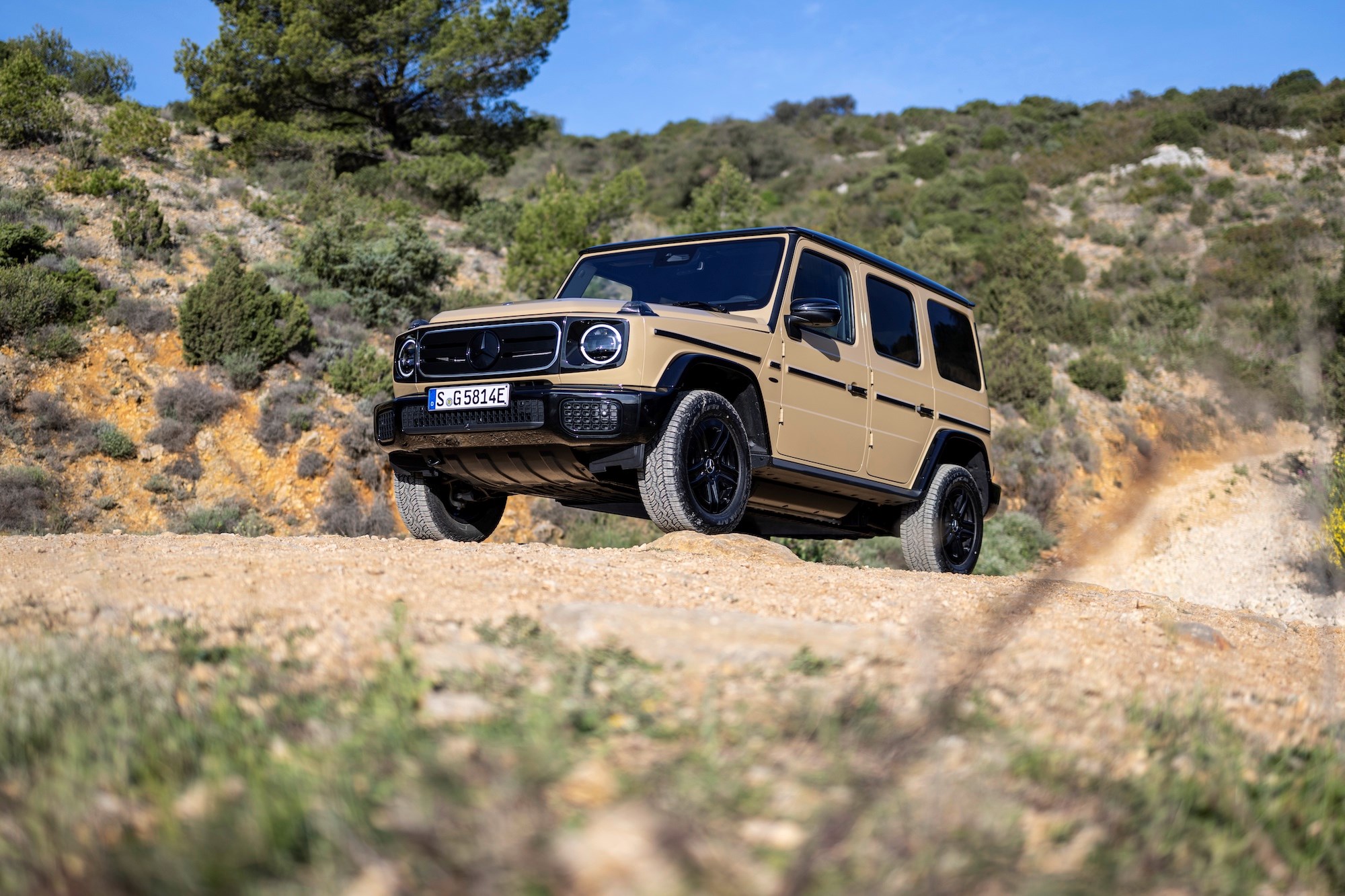
Slightly bizarrely, the EQ-specific grille available on the EV in other markets (and already seen on other EQs: black, shiny, not a grille – you know the one) is not available at all in the UK.
G-Class tradition runs not very neatly parallel to other iconic 4x4s such as the Jeep Wrangler and Land Rover Defender. The Jeep is currently transitioning to electric, while trying to maintain its cowboy-friendly chaps-ahoy image, but the currently non-EV Defender has gone miles upmarket in its technical sophistication and cabin plushness, yet has kept its formidable off-road ability. The aim for the electric G-Class is to remain first and foremost a G-Class, because G-Class fans don’t really care what Land Rover, Jeep, Ford, Toyota and Ineos are up to: they just want a G-Class, and can either afford one or can’t.
But some of those G-Fans for various reasons need or want an electric powertrain. So Merc has set itself the very high aim of keeping the G’s looks, capability, comfort and practicality, while going clean and quiet. A tall order.
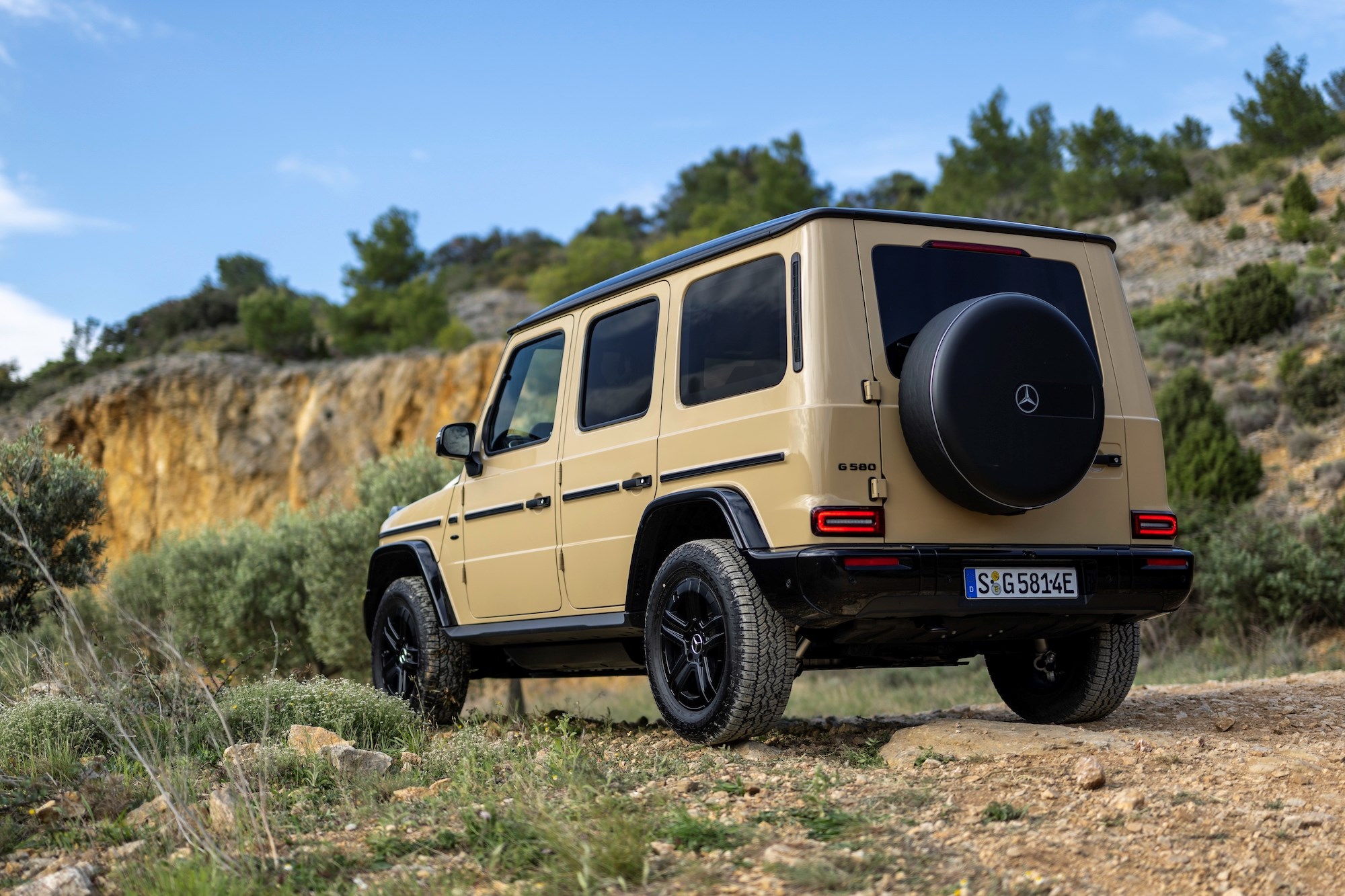
At a glance
Pros
- Remarkable off-road performance
- Super-fast rapid charging
- Calm and quick on the road
Cons
- Sub-300-mile range
- It weighs 3.1 tonnes
- Hefty financial commitment
What’s new?
Interesting question. Is this a whole new generation of G-Class, or a midlife facelift with an electric option arriving in the line-up?
The range-wide changes are relatively modest: new infotainment software, extra sound insulation, standard-fit LED headlights, adaptive adjustable damping as standard, and a greener (well, relatively…) engine line-up in which all the combustion cars are now mild hybrids.
But the 580 is significantly different under the skin. The chassis is still the ladder-frame type that is regarded as essential to G-Class DNA, but it’s been hacked about to accommodate a massive battery pack that turns it into a skateboard-style EV chassis. Three of the eight cross-beams have been removed to make way for the battery, which occupies the entire under-cabin area.
The battery has the same number of cells as the EQS limo, but the narrowness of the ladder-frame means that here the cells are double-stacked, which in turn has required the creation of a triple-layer cooling system. It’s all in a tough aluminium housing that’s bolted to the chassis, effectively making the battery a load-bearing component, and there’s a flat carbon-composite bash plate underneath.

There are four permanently excited synchronous electric motors – two at the front, two at the back, each driving one of the wheels. There’s a two-speed transmission, low and high, that means the e-motors can stay spinning at close to their optimal revs even when the car is making very sedate progress, as you often do on tricky off-road routes.
The suspension is essentially the same – independent front, a form of rigid axle at the rear – but adapted to fit with the e-motors, and with the spring rates increased to cope with the weight of the battery.
What are the specs?
The 116kWh battery pack will rapid charge at up to 200kW to give a 10-80% charge rate of 32 minutes. It’ll AC charge at up to 11kW – more than your typical home wallbox’s 7.4kW output – for a 10-100% time of nearly 12 hours.
The motors produce a total of 579bhp and 859lb ft of torque: big numbers by combustion standards, but oddly modest for a big EV. It does suggest a hotter AMG version might follow, but Mercedes will not be drawn on the subject.
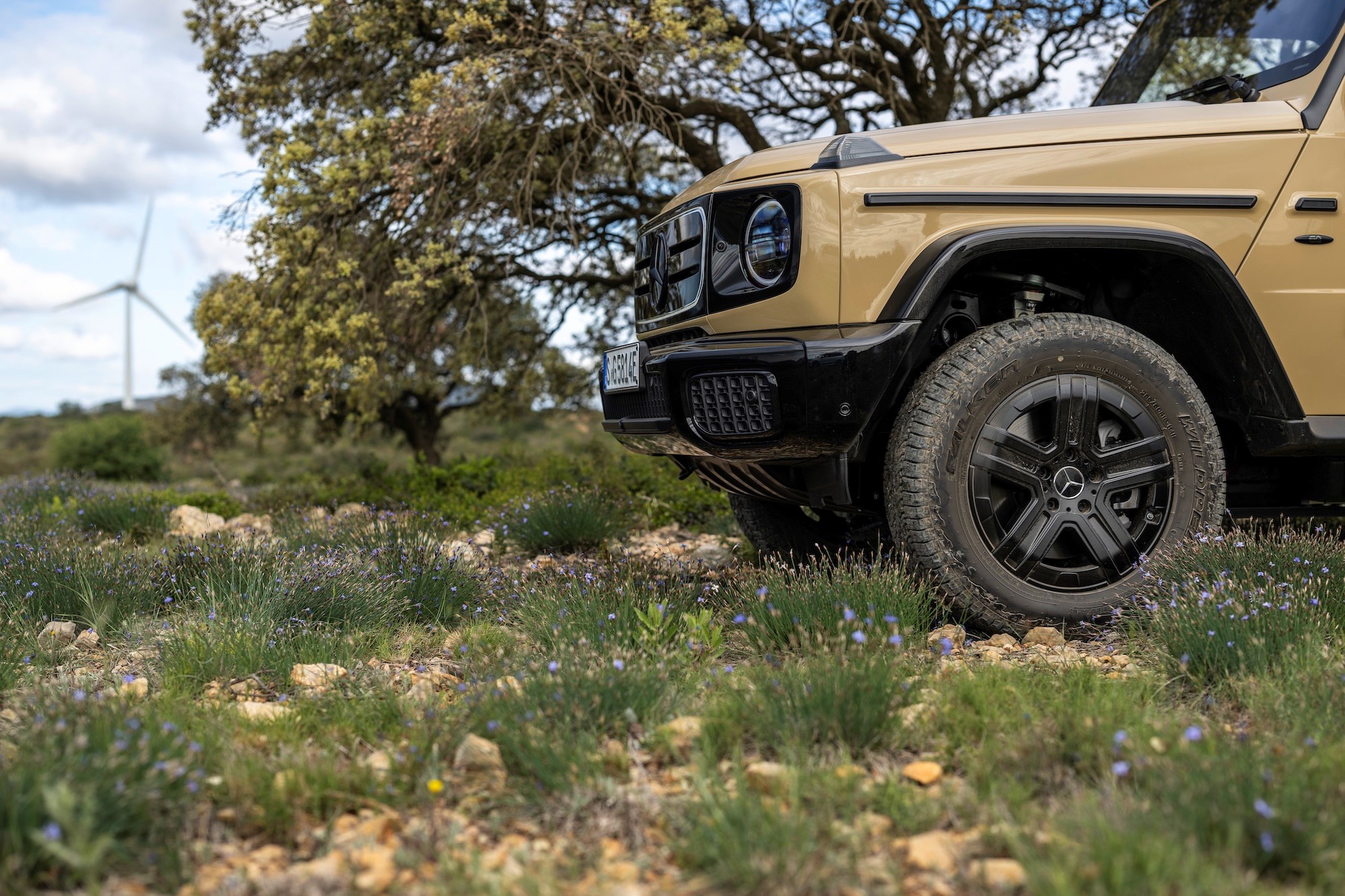
Despite the adverse bulk and blocky aerodynamics, that’s enough power for a 4.7sec 0-62mph time; top speed is limited to 112mph. Its efficiency is not great, at an official 2.05-2.24 miles per kWh, and rather less on our vigorous test route. Official range is 270-294 miles; again, not brilliant for a car that’s big and comfortable and should be happy to take a family to the Alps.
The weight of 3085kg must also get the blame for its slightly dainty maximum payload of 415kg, a figure set to prevent the G580 wandering into commercial vehicle territory. Similarly, it’s not meant to be used for towing.
What’s it like to drive?
A lot of expertise and testing has gone into making the G580 perform very much like a regular combustion-engined G-Class, despite its significant technical differences and its extra weight.
The revised suspension retains the vital ability to let each wheel travel a different distance as the car tackles uneven ground, so the occupants stay well insulated and the vehicle takes all the punishment. It’s very smooth on road, too, with the option to firm up the suspension at the push of a button for faster driving with less bodyroll. Depending on your driving mode and speed, sometimes the front wheels will disconnect from the motors, to cut consumption. You don’t notice the transition.
Despite the weight of more than three tonnes, the G580 is overall superb off-road. There are various aids available to help the driver stick to crawling speed for tricky ascents and descents, or you can turn them off and take full control yourself. Traditionalists might fear that the absence of differential locks – because this is a car with no diffs – will make difficult terrain more of a challenge. But in fact the clever new drivetrain does that job just as well, or even better. And yes, it can jump over hill crests, and it lands with a surprising lack of noise.

In fact the G580’s hushed progress enhances both on- and off-road driving, putting you more in touch with your surroundings and able to chat naturally with your passengers.
The electric G-Class is in some ways better off-road than the combustion models, thanks to the way its four motors can deliver instant torque very precisely to the individual wheels. This takes its most extreme form in the new G-Turn function: the car can turn a complete circle within its own length, by getting the wheels on one side to spin in the opposite direction to those on the other. It’s mostly a gimmick. What’s actually more useful is G-Steering, where the car’s cornering ability becomes much tighter by slowing the inside rear wheel and speeding the outside wheels as you tackle a tight bend. For dodging trees or ditches, this could be a lifesaver, and it’s a lot of fun too.
Although the aerodynamics are unavoidably poor, and the slab-sided G is vulnerable to strong side winds, there’s not much wind or road noise. It’s a refined, sophisticated driving experience, but that’s not at the expense of good ride quality, and precise and natural-feeling steering.
The brakes are not so good, though, at least on road. There are three levels of regenerative braking (adjusted via the paddles behind the steering wheel), but they can only go so far in slowing down a fast-moving and heavy 4×4. The traditional friction brakes don’t feel powerful enough or quick enough to respond.
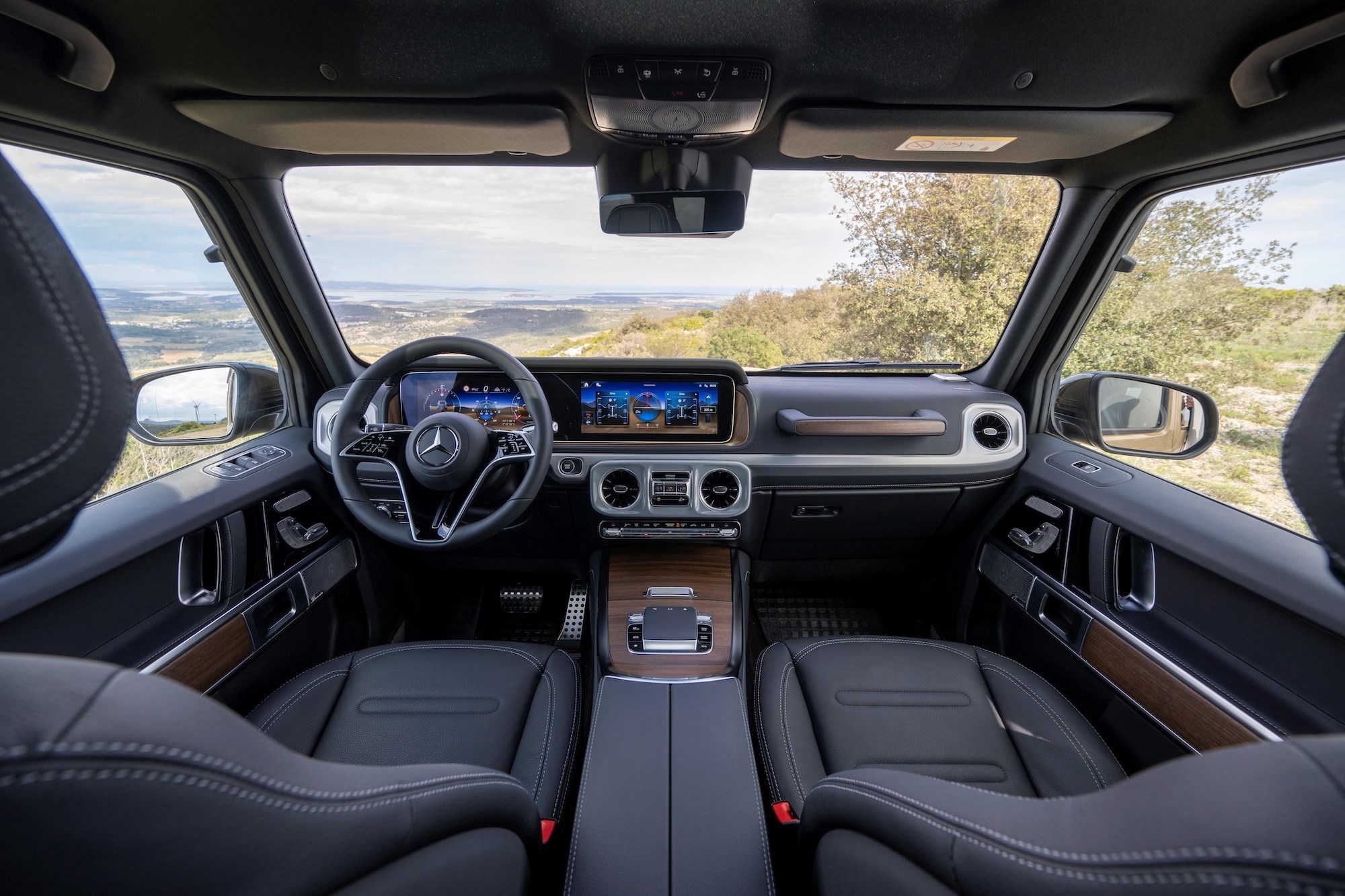
What’s the interior like?
It’s near as dammit just like any other new G-Class. Chunky grab handles. Slightly cramped rear legroom. Big air vents. Good view out. Plenty of pampering, but short of the plushness of an S-Class.
You get two 12.3-inch displays dominating the dash of the G 580. Although they’re the same size as those in the 2018-on G-Class, the digital driver’s display and central touchscreen are running the newer, sharper MBUX software.
A new off-road control panel replaces the diff lock switches with buttons for the G-Turn function and some bespoke screens in the infotainment, showing wheel articulation, angle of lean etc. Quality remains good, and there are many personalisation options offered as part of the Manufaktur programme, at a price.
A rear-seat entertainment package with two 11.6-inch screens is on the options list, as is an upgraded Burmester stereo with Dolby Atmos. There’s also for the first time keyless entry. As ever, it often takes two slams to get the doors to shut properly.
Boot space beneath the parcel shelf is good but certainly not great for the class at 555 litres. One option is to replace the rear-mounted spare wheel carrier with a box designed to hold your charging cables, thus freeing up a bit more boot space (but making life tricky if you get a puncture). The tall roof does mean a total capacity with the seats down of 1990 litres, but you don’t get a flat loadbay.
You get loads of safety kit as standard, including adaptive cruise control with steering assist, automatic emergency braking, blind spot monitoring and pre-safe (which can close the windows and sunroof and even move the front passenger seat to lessen the chances of injury in the event of a crash).
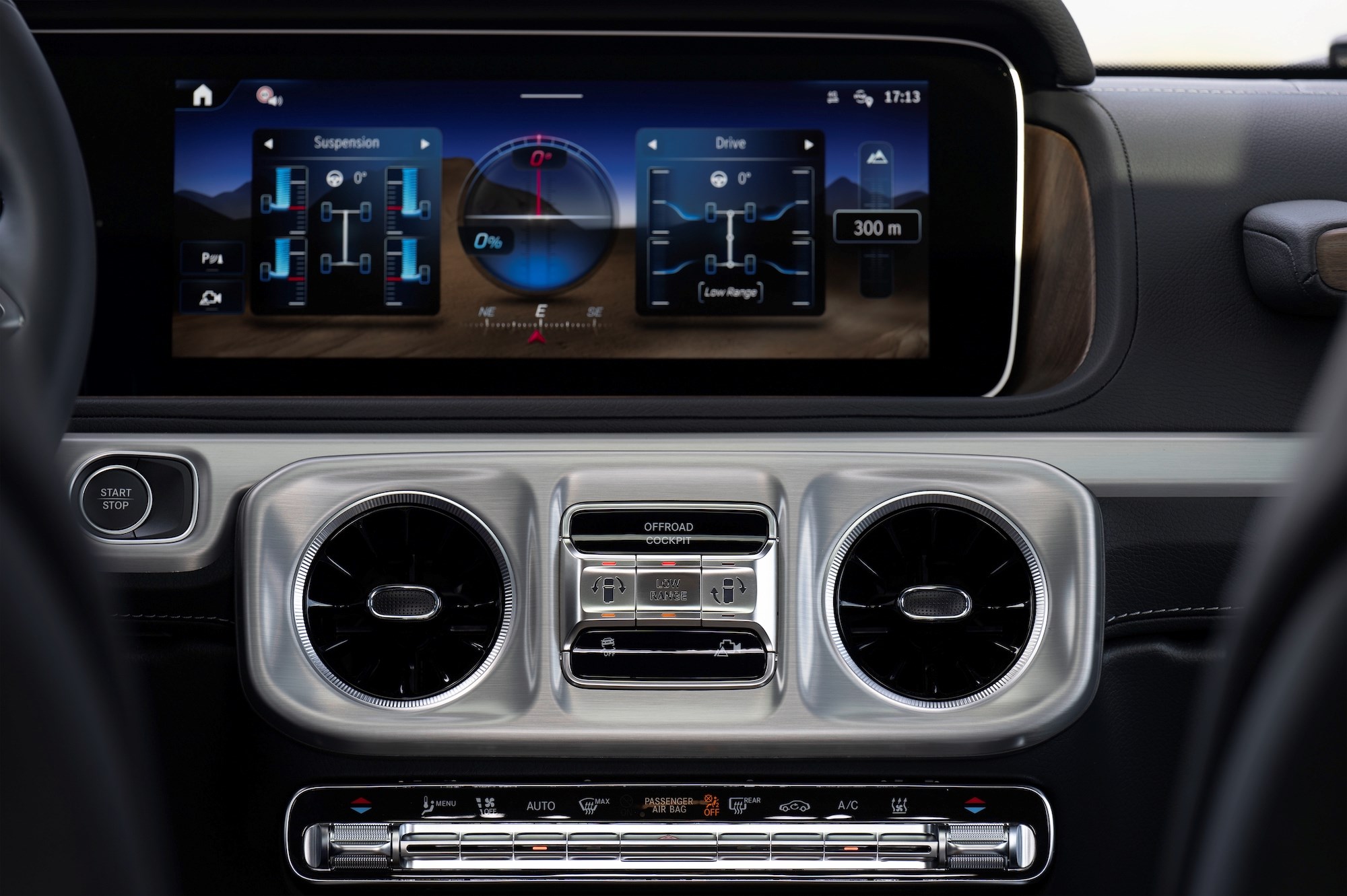
Before you buy
In the UK, the G580 is initially available (from late 2024) in well-kitted Edition One spec, priced at £180,860. You can expect a slightly plainer version to be available in due course, but don’t assume it will be much cheaper, bearing in mind that the rest of the G-Class line-up now starts at £136,690 for the diesel G 450d, and goes up to £203,595 for the Magno Edition version of the AMG G 63.
Mercedes has previously confirmed that it is working on a smaller version of the G, too.
It doesn’t have direct rivals in the sense of serious on-/off-roaders that are all-electric. Those are yet to come, in the form of the imminent electric Range Rover and the Ineos Automotive Fusilier, now expected in 2027. If what you’re looking for in an electric 4×4 is luxury and on-road cruising, the likes of the BMW iX and Mercedes’ own EQS SUV might be more up your street, or maybe the Kia EV9.
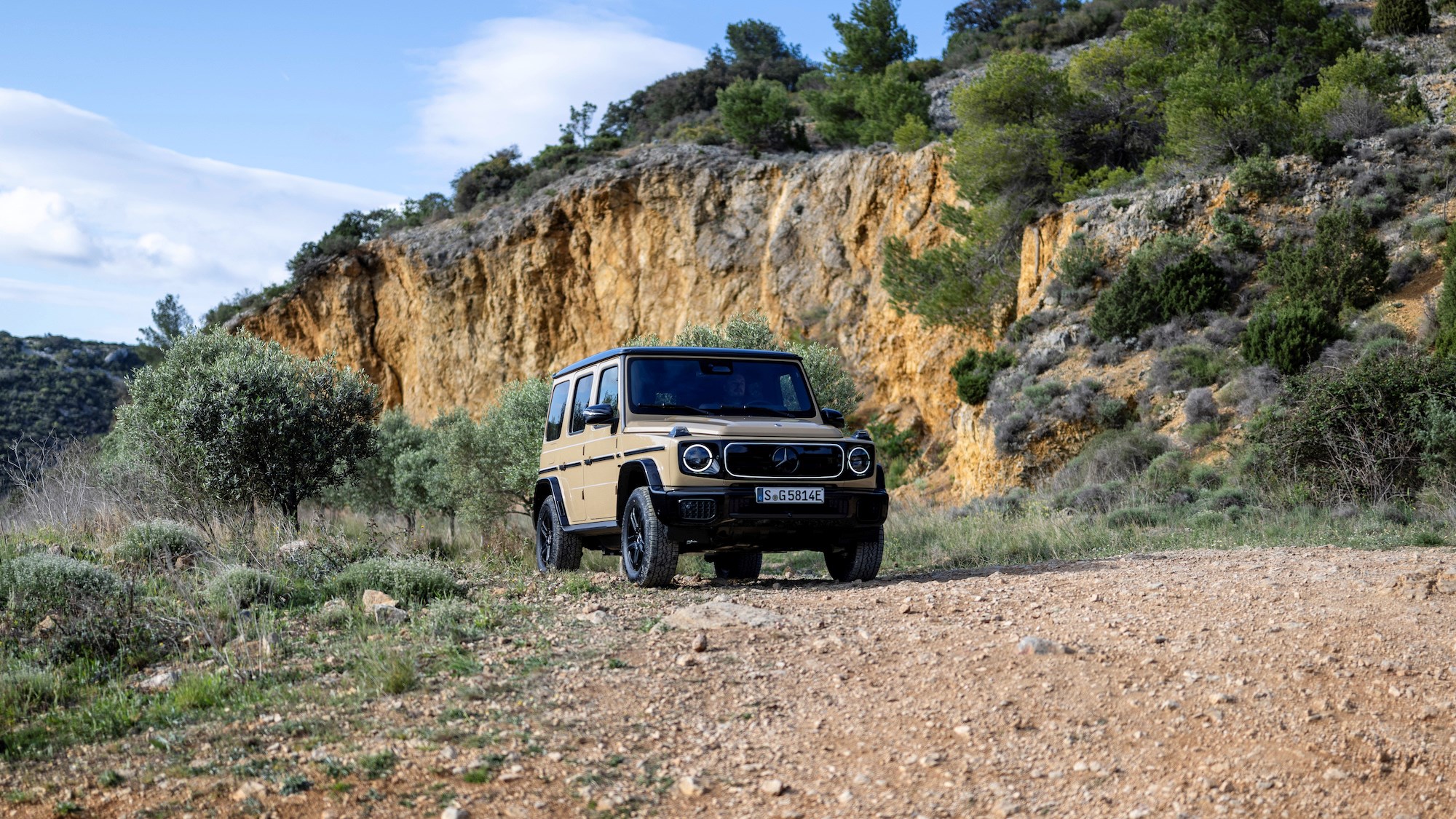
Verdict
Compared to other current G-Classes, the electric G 580 is quieter and smoother on the road, ridiculously capable off the road, and a bold statement for any owner to make. It’s also very expensive, and its efficiency isn’t great, so although the battery is big the range isn’t impressive.
Compared to early G-Classes – the heritage now stretches back 45 years – this is very slick and technologically advanced, having now shed any lingering traces of the agricultural or military.
And compared to its direct rivals? Well, there aren’t any.